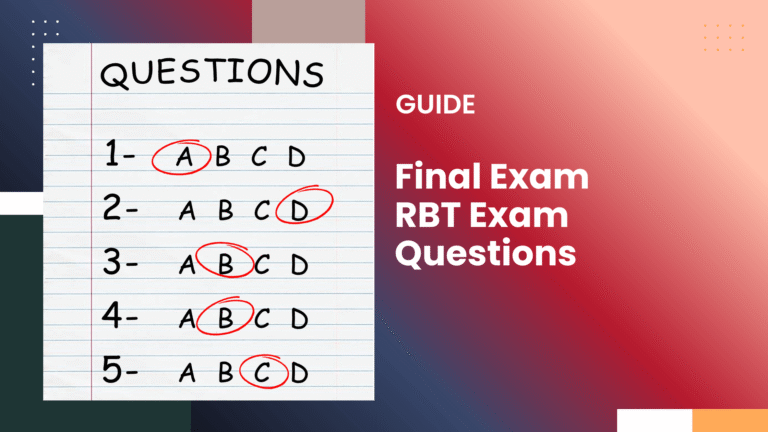Documentation To Hire RBT | 6 Crucial Certificates Mandatory

Documentation to hire an RBT includes proof of a high school diploma, a background check, a 40‑hour training certificate, signed competency assessment, and a completed BACB application.
Hiring an RBT isn’t just about checking boxes and can be time-consuming and a lot of headaches, especially if this is your first time or have no experience in it.
To tell you the truth, it’s about finding someone who’s trained, eligible, and actually ready to work in the field with your clients, under your supervision.
Documentation To Hire RBT
Here is a list of documents that you should collect from each applicant:
- Copy of their high school diploma or transcript
- Valid government-issued ID (for proof of age)
- Training certificate for the 40-hour RBT course
- Background check results (less than 180 days old)
- Their Initial Competency Assessment (signed and complete)
- RBT credential certificate from BACB
You cannot make some of the documents optional; you need to have all of them and keep them stored safely.
First, What Makes Someone Eligible?
Before you even interview anyone, you must make sure your candidate meets the bare minimum:
- At least 18 years old
- Has a high school diploma or GED
- Finished the 40-hour RBT training from a legit provider
- Cleared a background check within the last 180 days
- Completed the Initial Competency Assessment with a qualified BCBA or BCaBA
- Holds an active RBT certification in good standing
There is no compromise allowed. If anything’s missing, they’re not ready for hire, as this is not some random job opening. They need to be experienced and have the correct qualifications for the job.
How to Screen RBT Applicants (Without Wasting Time)
I’m gonna assume that you have done your due diligence and that once you’ve verified eligibility, you can move on to interviews.
But you need to be smart about it. You’re not just hiring a person, and you’re handing them real clients.
Ask questions that show:
- They understand ethics, basic ABA terms, and data collection
- See if they can communicate clearly with you, with clients, with families
- Lastly, they’re not just “looking for a job” but actually want to grow in this field
Of course, they are looking for a job, which means they “need a job” per se
But they also must be enthusiastic about the field and have the passion to grow, learn, and develop in this field.
You don’t need a perfect candidate, and they rarely are. But you do need one who shows up, takes feedback, and stays curious.
Here is a comprehensive guide on how to be a better RBT.
What to Test After You Hire Them
Just because you have hired someone after getting through the interview doesn’t mean it ends there.
You still need to make sure they’re competent in real settings.
Test them on:
Data Collection
You can test them and see if they can measure, assessment, frequency, duration, and interval data without errors. And even if they are not perfect, they wanna learn from their mistakes.
This will happen all the time if you hire a first timer.
Skill Acquisition
For this domain, check if they know how to use prompts correctly or fade prompts without making the learner dependent.
It can be a lot of things.
Behavior Reduction
Analytical skills and behavior reduction skills are important for an RBT.
An example would be if they know what to do when a behavior spikes.
Professional Conduct
Maybe try giving them realistic situations as what would happen in real life, and watch their decisions.
You can also study whether their Ethics violations often start from poor judgment in small moments and how they react to it.
Documentation
No matter how good they are at other domains, you must also check if they can write a session note and can record the session.
Is it clear? Objective? Does it actually say what happened?
These tests don’t necessarily need to be formal, but you can build them into onboarding or early supervision.
Paperwork You Need to Keep as an Employer of an RBT
Once you have hired your RBT, here’s what should be in their file at all times:
- Employment contract or W-9
- Copy of all credentials
- Initial Competency Assessment
- Background check record
- Supervision logs (must hit 5% monthly minimum)
- Signed supervision agreement with a BCBA
- RBT renewal records if they’ve been practicing for over a year
This is because in case you get audited, sued, or something goes wrong, you’ll be glad this is all in one place.
If you want to know more about Liability insurance, I have a guide on it. Check it out here.
Mistakes to Avoid When Hiring RBTs
Like I said before, if you are hiring for the first time, you can get a few of these wrong, and it can come back to haunt you.
- Skipping the background check
- Hiring someone who hasn’t finished their 40-hour training yet
- Not confirming their RBT number or checking BACB status
- Assuming “they’ll figure it out later” on supervision
- Failing to test skills before assigning clients
I urge you to please avoid these. Trust me, you’ll save yourself a mess later.
Real Talk from ABA Employers in the USA
“You can train someone on skill acquisition. You can’t train work ethic. I’d take an eager learner over someone with experience but no accountability.”
— Clinic Director, California
“We stopped hiring anyone who didn’t bring in every single document. If they can’t complete that step, they’re not going to track data either.”
— BCBA in Texas
Personally, I think hiring the right RBT isn’t hard, but it requires structure.
So, I want you to follow these steps: Eligibility first. Documentation next. Testing always. And supervision from day one.






